Instruction
The High Road To Scotland

Kevin Markham
“You’re going to the Scottish Highlands to play golf? In November?”
“Yep. For three weeks.”
“That’s crazy.”
Everyone I spoke to thought I was an idiot for going so late in the year. Expect heavy rain and plummeting temperatures I was told, time and again. I assumed I’d be writing a Survival Guide to Scottish Golf, one that recommends carrying a small coal-fired power station in your pocket for warmth.
There is an air of mystery and romanticism to the Scottish Highlands. As a boy, I always imagined these Highlands were way up high, mist-enshrined mountains with clouds hiding their peaks as far as the eye can see.
It turns out that’s exactly what they are… but there is so much more. The coastline encircling those mountains is laced with beautiful beaches, bays, cliffs and castles…. and dunes.
And the Scots have been playing golf in those dunes for centuries.
Earlier this year, Scotland introduced a 500-mile coastal driving route called the North Coast 500 (NC500). It wraps around the northern Highlands, stretching from the region’s capital, Inverness, up to John O’ Groats, the most northerly point on the British mainland. From there it switches west for 90 miles to the isolated and beautiful Durness, before coasting south through a dramatic and inspiring landscape to the equally remote village of Applecross.
This is Scotland at its wildest, forever battered by the Atlantic Ocean and the elements. Given the landscape and the often-inhospitable conditions, you can understand why the county of Sutherland (roughly the size of the State of Delaware) has an average population of just two people per square mile.
When I first heard about the NC500, I realized that Royal Dornoch was on that route, along with Brora. More research revealed the route possesses 27 golf courses. I sensed an opportunity to do something a bit different: drive those 500 miles and play every course along the way. Perhaps, after 30 years, I would get to determine if my dreams of the Scottish Highlands coincided with reality.
The starting point was Inverness, on the Moray Firth. There are many golf courses nearby, but the renowned Nairn and Castle Stuart are not on the NC500. Instead, I played the parklands of Inverness and Strathpeffer, and the heathland Muir of Ord.
I also played Torvean, Loch Ness, Invergordon and Alness, and it was these four that emphasized how screwed up my priorities had become in recent years. The courses’ quality was underwhelming but at the sweet parkland of Alness I realized—or remembered—that what makes golf so special isn’t playing highly manicured fairways, perfect greens or some grand design.
The game’s essence, rather, is hitting a ball in the company of friends and switching off for a while. I had forgotten that spirit and it wasn’t for another week, when I played Reay Golf Club on the north coast that it all came back to me. The rough links fairways took me back to when I was a boy, trampling over similar fairways on a beat up nine-hole course in County Cork … and loving every minute of it.
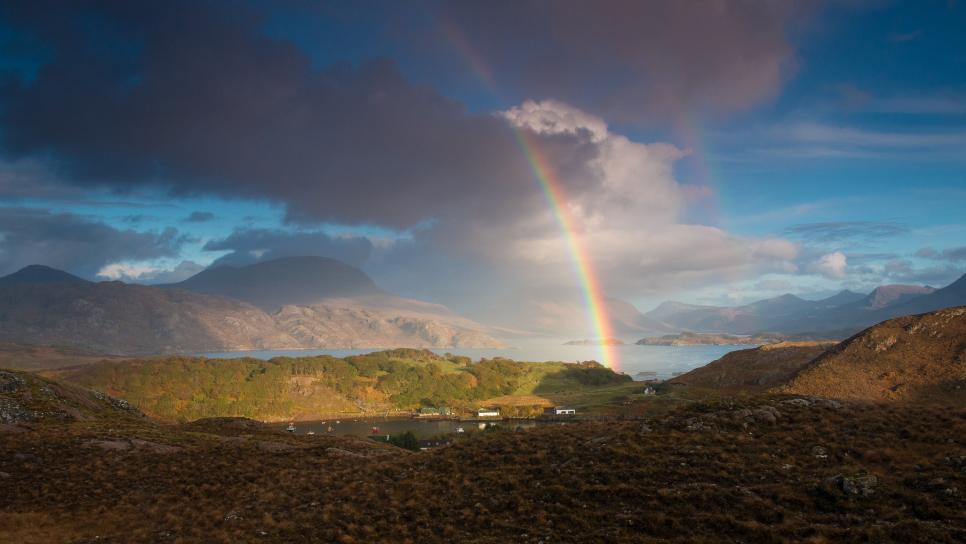
Kevin Markham
Fortrose and Rosemarkie was the first serious course I played, a low-lying links laid out by Scotsman James Braid on a small peninsula that slashes into the Moray Firth. Established in 1888, someone recently found proof in their attic that golf has been played here since 1702. It makes it the 15th-oldest golfing site in the world.
After leaving Inverness, my next stop was in Tain, a quaint town and home to an Old Tom Morris links celebrating its 125th anniversary. Tain Golf Club, along with Golspie, tends to be forgotten behind the might of Royal Dornoch and Brora. It is a shame because Tain is old school and charming.
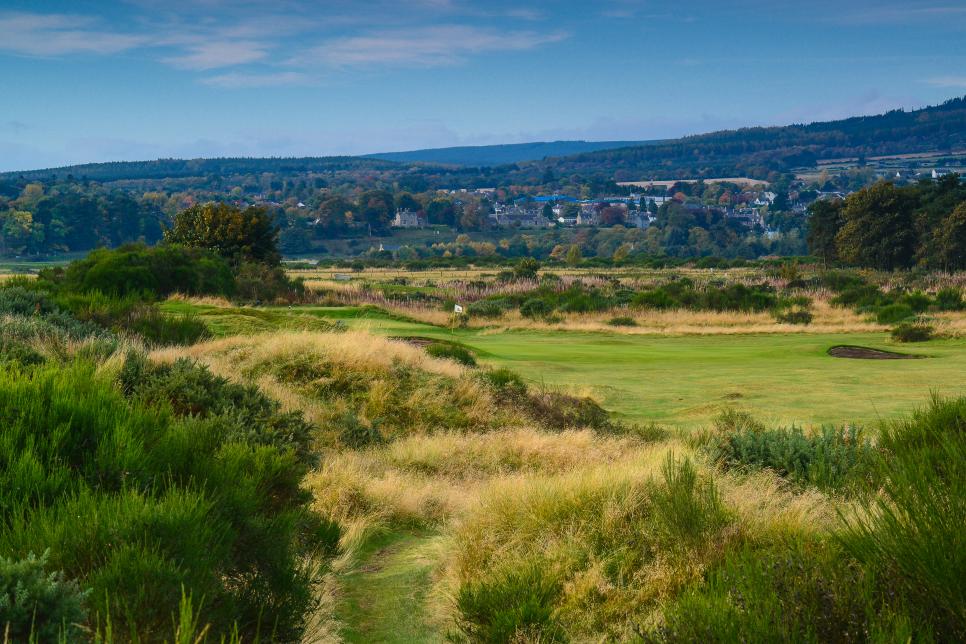
Kevin Markham
And it was at Tain, squeezed by gorse and broom, that I rediscovered the speed at which golf should be played. Playing on my own, I finished in 2½ hours, never losing the three-ball behind me. These guys were fast. I imagine sponsors and TV stations would be infuriated if the professional game were ever to achieve such speeds, but what a breath of fresh air it would be for the amateur game.
I drove over Dornoch Bridge the following morning to play one of the world’s greatest courses. Royal Dornoch has 400 years of golfing history ingrained in its fairways and, on this particular day, it was kind enough to provide clear blue skies and an empty timesheet. On a course this magnificent it meant I could lap up every inch of the place. My round took four hours. Who knows how long it would have taken if the gorse had been in bloom.
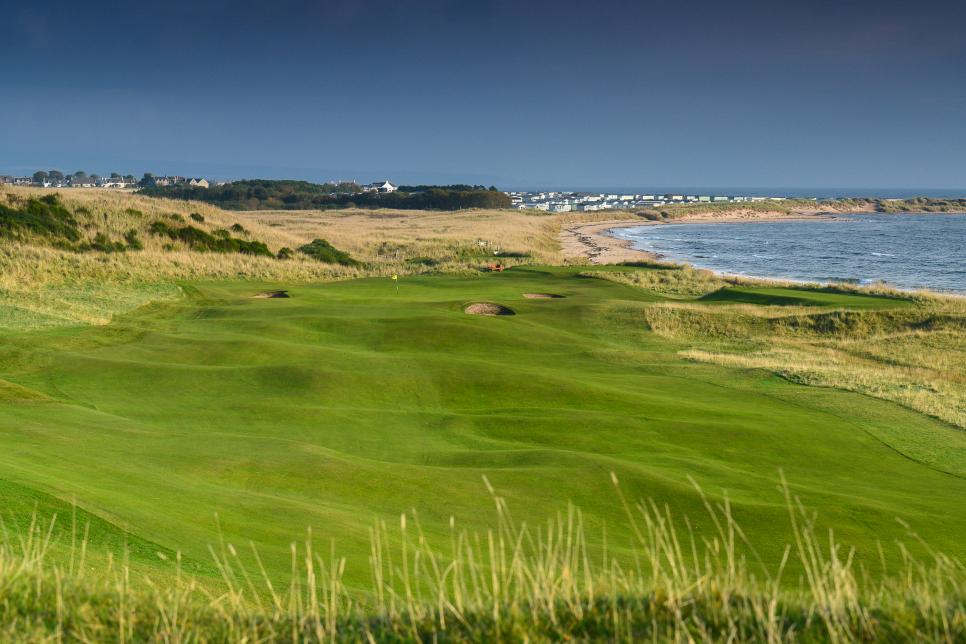
Kevin Markham
I spent the afternoon on the second course (the Struie) playing with young Ru MacDonald, of Scottish Golf Podcast fame. He headed off after half a dozen holes to visit the site of the proposed new course up the road in Embo. While exploring the dunes he bumped into Mike Keiser, the developer. The next day he “broke” the story, and the local papers and international golf media were all over it. With Bill Coore and Ben Crenshaw at the helm, Embo will make this area of The Highlands one of the world’s most sought after golfing destinations… more so than it is already.
The golf at Royal Dornoch is superb but so, too, is the overall experience. Royal courses can be rather stiff and formal, but Sean (Pro shop) and Flo (bar) couldn’t have been more welcoming. It was as friendly a Scottish welcome as anyone could ask for and it was something I encountered everywhere I went.
And I don’t just mean at the golf courses. A golf trip to Scotland is about so much more than the little white ball. This is where the NC500 comes into its own. It can’t seriously market itself as a golf route as the golf is concentrated on the east coast. There are courses all along the route, for sure, but not of the scale and quality (Durness excepted) that will lure golfers from overseas. By the time you reach the north and west coasts, however, you will be lapping up the scenery, the solitude and, I suspect, the whisky.
My aim was always to combine the different elements of what makes Scotland such a desirable golfing destination. Mornings were spent on the golf course while afternoons focused on the history, culture and beauty of the places I passed through. There was plenty to see and do. In Dornoch, a 13th-century cathedral dominates the heart of the village. Nearby, the Historylinks Museum has a special section devoted to Donald Ross, Dornoch’s favorite son and a one-time head greenkeeper and professional at the golf club. He left Dornoch in 1899, at age 27. His destination was America, and, over the next 50 years he designed and redesigned more than 400 golf courses.
These local museums and centers appear all along the route – they’re as frequent as the distilleries – and it shows how seriously the Scots embrace their past (and their whisky).
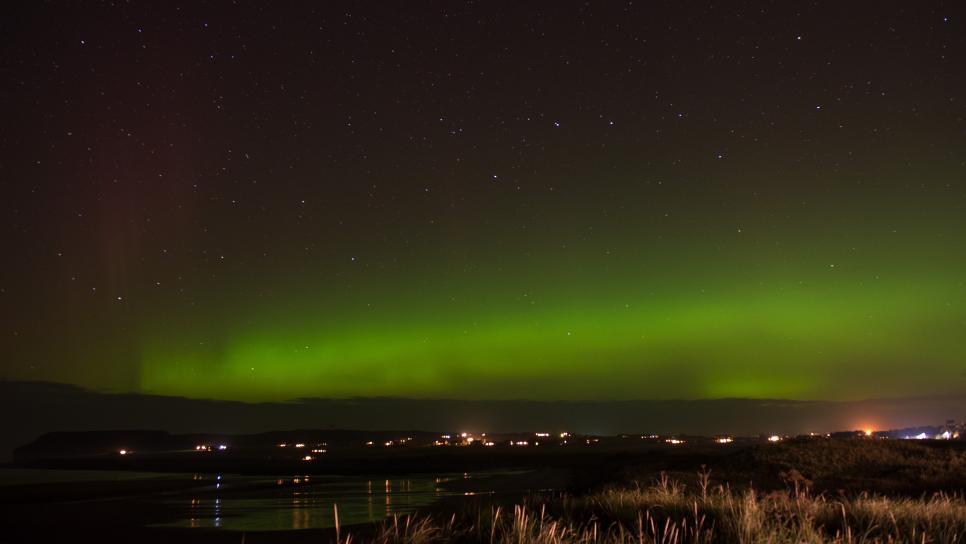
Kevin Markham
On my journey north, the Hill o Many Stanes, Sinclair Castle, Dunrobin Castle, Whaligoe Steps and the sea stacks at Duncansby Head all stole my time, and I was happy to be robbed. Along the north coast I finally got to experience the Northern Lights, and once I passed the town of Thurso, the scenery became ever more enchanting. First came the beaches and the dunes and that overwhelming desire to lay out your own personal golf course, then came the mountains and the lakes and the peaks of Ben Loval and Ben Hiel, beyond Tongue. These peaks are said to have inspired Tolkien’s Mordor in Lord of the Rings—so sharp and jagged that even the clouds couldn’t hold on to them.
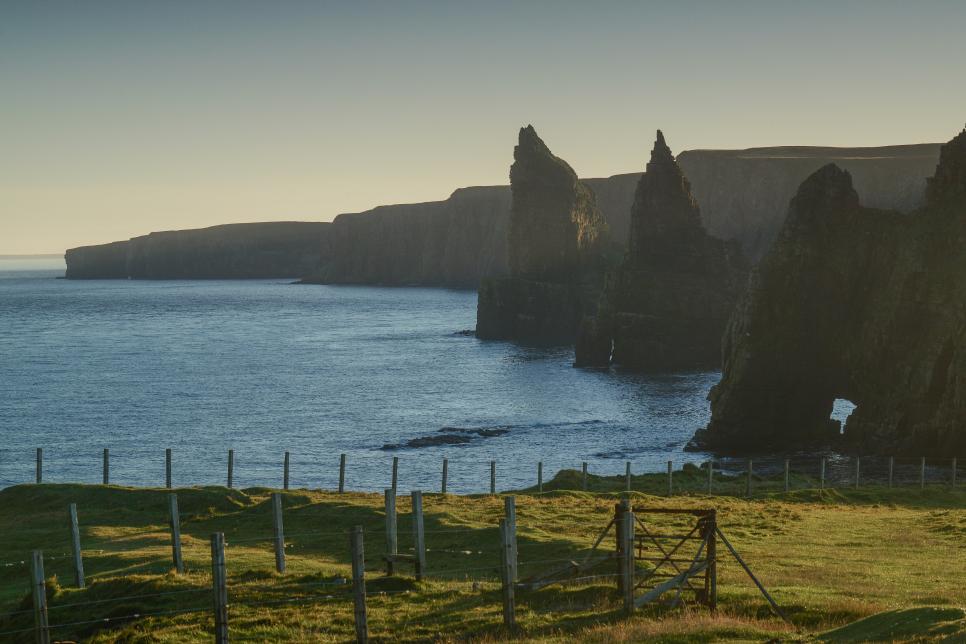
Kevin Markham
But it is the west coast that will take your breath away, where your urge to stop the car to drink in the views will come on every bend and crest. Here the mountains roll forever into the distance, the heather and bracken paint their colors across the landscape and the lochs slide in gracefully from the ocean.
For mile after mile (some 180 in all) it captivated me, and I was lucky to make it to any golf course once I passed Thurso, such was the urge to explore. Of the golf courses along the northern and western coasts, only Reay and Durness will hold any appeal for golfing aficionados, with Durness’ grip firmly on the “hidden gem” trophy. Nine holes of scintillating links golf over big, smooth and rolling dunes, with spectacular scenery in every direction. It is worth the trip, especially when you learn a bit about the course’s history—Alastair, the lone greenkeeper, will happily fill you in.
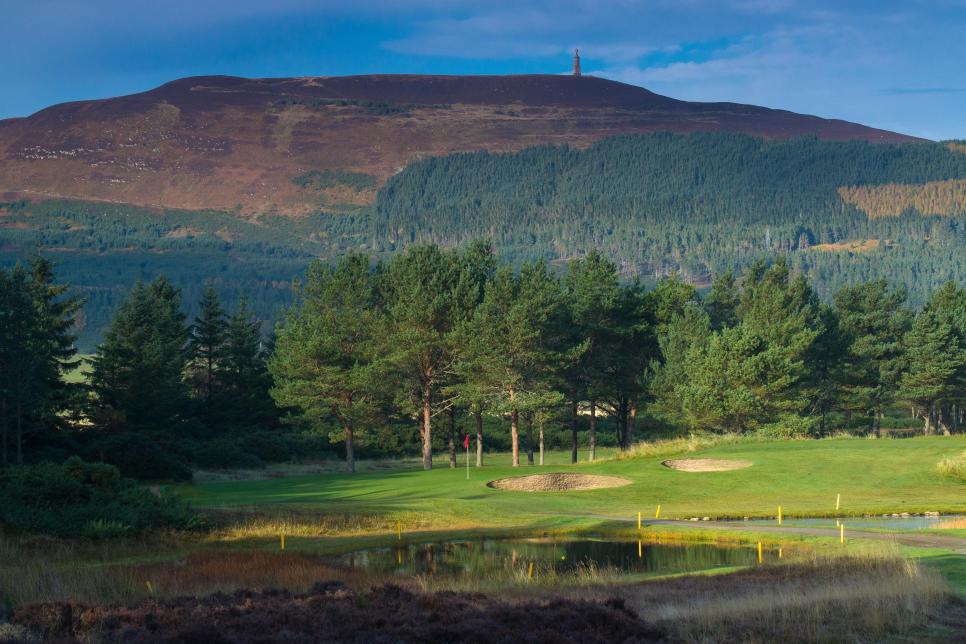
Kevin Markham
Back on the east coast, after falling in love with Royal Dornoch, my affair with Scottish golf courses was set to continue. The A9 road took me on to Golspie and Brora, both designed by Braid. Golspie is a combination of adventurous links and colorful heathland holes, watched over by the 100-foot statue of the Earl of Sutherland, atop Ben Bhraggie. It’s a contentious statue, reminding everyone of the despicable Highland Clearances of the 18th and 19th centuries.
Braid designed five of the courses along this 27-course route, but Brora is probably the greatest of all his creations. The links embraces the gentle flow of dunes around Kintradwell Bay, in a classic out-and-back routing. I considered it a perfect foil to Royal Dornoch, with two additional benefits: sheep and cattle roam the fairways, creating that golf-from-the-ages quality, and golfers will find absolutely no fairway distance markers of any kind. Put that GPS device away and use your head … and your heart.
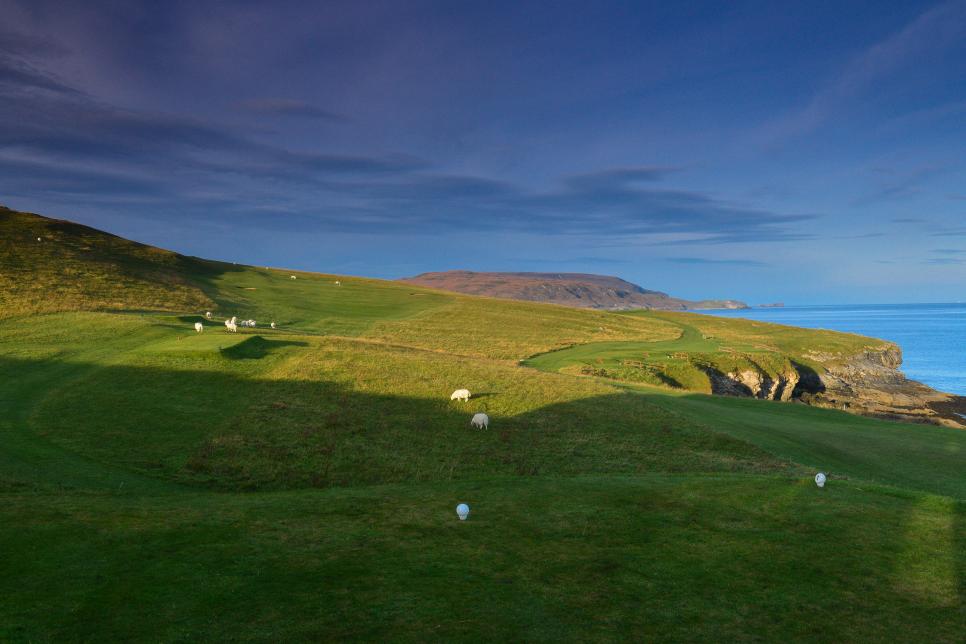
Kevin Markham
For a golfing odyssey, the five courses of Fortrose & Rosemarkie, Tain, Royal Dornoch, Golspie and Brora will prove more than satisfactory. You could leave it at that, but the North Coast 500 has already been nominated as one of the best driving routes in the world. It deserves to be seen, explored and enjoyed. Believe me, you won’t be disappointed.
As for that Survival Guide to Scottish Golf, it would have been very short indeed. The only thing I had to endure was a mild case of sunburn. Who’d have thought I needed sunscreen … in the Scottish Highlands … in November.
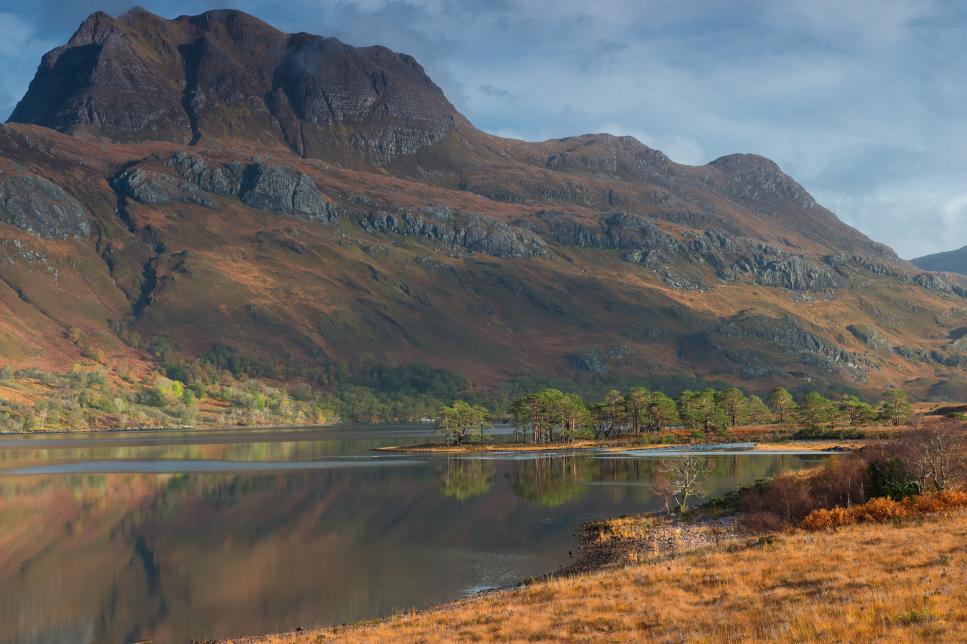
Kevin Markham